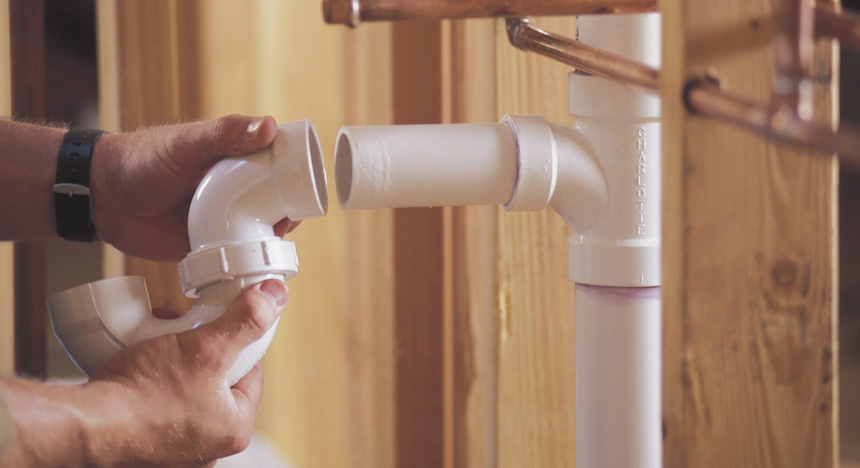 Because heavy metals can pose acute and chronic human health risks, understanding their source and fate in drinking water infrastructure is important. Metals in tap water can originate from groundwater and surface water; are added during water treatment; and can leach from water distribution, service lines, and building pipes, scales, and plumbing fixtures. In recent years, very high heavy metal concentrations have been caused by water chemistry changes and backflow accidents. For these incidents, it is unknown how much metal accumulated in plumbing infrastructure because no testing results were found.
Because heavy metals can pose acute and chronic human health risks, understanding their source and fate in drinking water infrastructure is important. Metals in tap water can originate from groundwater and surface water; are added during water treatment; and can leach from water distribution, service lines, and building pipes, scales, and plumbing fixtures. In recent years, very high heavy metal concentrations have been caused by water chemistry changes and backflow accidents. For these incidents, it is unknown how much metal accumulated in plumbing infrastructure because no testing results were found.
In the United States, plastic polyethylene pipes are being installed to reduce metal content in tap water. In this research, no studies were found regarding heavy metals present on high-density polyethylene (HDPE) and cross-linked polyethylene (PEX) piping.There is growing evidence that HDPE and polyvinylchloride water distribution pipes can accumulate heavy metal scales, but no investigations were found that examined plastic building plumbing. No information was found regarding metal loading on building plumbing plastic pipes or comparing the oxidative condition of plastic pipes within a single plumbing system. A few studies have shown that oxidized polyethylene materials sorbed a greater amount of metals compared with new material; therefore, a plastic pipe’s degree of surface oxidation may be important in understanding metal–plastic pipe interaction.
This study was conducted to examine metal abundance on plastic plumbing pipes and determine whether plastic surfaces influence metal scale formation. Specific research objectives were to quantify the surface and bulk oxidative condition of PEX pipes removed from a residential building after one year of use, determine metal loading on the pipes removed, and conduct bench-scale metal nucleation experiments to determine whether a plastic surface can allow metals to adsorb and act as nucleation sites.
An entire one-year-old residential PEX (type A) pipe plumbing system was removed in 2015. Pipes were collected from 10 locations from both cold and hot water plumbing: service line, pipes exiting three domestic water heater tanks in series, and pipes before the basement laundry fixture (cold and hot), first-floor kitchen sink (cold and hot), and second-floor bathroom sink (cold and hot). Plastic pipe condition and metal loading on their inner pipe walls were investigated. On the basis of field results from the current study, a bench-scale experiment was conducted to better understand iron crystal formation on a polyethylene surface. Results showed that within a single plumbing system, there were significant differences in scale morphology, amount of metals present on pipe inner walls, and pipe aging condition. Pipes had a wide range of oxidation induction time values (antioxidant loadings), some pipes had oxidized surfaces, and no obvious trends were found relative to in-building location or water temperature. Attenuated total reflectance Fourier transform infrared spectroscopy results showed that the surface of some plastic pipes was oxidized. Metals found on the plastic pipes—aluminum, calcium, cobalt, copper, iron, magnesium, manganese, nickel, lead, selenium, and zinc—were corrosion products from water distribution and plumbing materials and were present in the source water. Iron was the most abundant contaminant detected on the pipes. Heavy metals that have health-based, treatment technique–based, and aesthetic drinking water standards (e.g., copper, iron, manganese, lead, zinc) were found on the plastic pipes. Metal loadings varied across in-building locations, sometimes by metal type and orders of magnitude. Detection of metal compounds on residential plumbing pipe implies that drinking water provided to the building can contribute to pipe scales in residential buildings. Bench-scale studies with low-density polyethylene showed that plastics can act as nucleation sites for iron species and expedited crystal formation.
More research is needed to examine the influence of source water characteristics, water distribution system materials, and water temperature on metal deposition onto plastic materials. As these results show, plastic drinking water pipes can accumulate metals on their surface. To better understand drinking water metal levels, the processes that control metal–plastic interactions should be further investigated.
This feature is a summary by corresponding author: Andrew J. Whelton is an assistant professor at Purdue University. For full text: pdf
